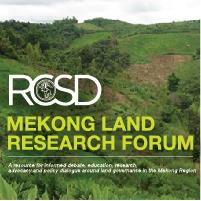Resource information
Cambodia is engaged in profound societal and economic changes usually referred to as “agrarian transition”. The agrarian transition involves three main trends: that of migration within the rural areas and from rural to urban areas; that of change within the rural society from a mainly land owning population of small peasant farmers to one in which a substantial number of the population are landless workers; and the transformations of the society from primarily non-urban populations dependent upon agricultural production and organized through rural social structures to an urbanized industrialized and market-based society (De Koninck 2008). In the context of population growth, a key challenge of this transition is the creation of productive jobs that can keep pace with the annual increase of growth in the annual labor force, which in Cambodia is estimated to be between 250,000 and 300,000 (Chan 2009). The transformations don’t follow a linear path but are shaped by upheavals and contradictions. A process central to this agrarian transition, is the urbanization and industrialization of the country, manifested by the increased share of industries and services in the GDP structure and in the national labor force (Lundström and Ronnas 2006). Another important aspect is the intensification and/or the expansion of agricultural land by taking advantage of the natural endowment of forest areas that could be harnessed for colonization (De Koninck 2008; Pilgrim, et. al. 2012). Both of these evolutions suggest the increased mobility of population and its redistribution through migrations, both within and beyond national borders.


